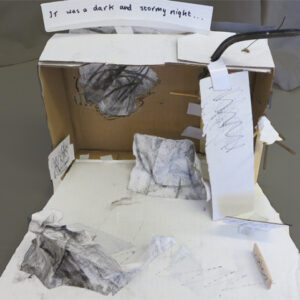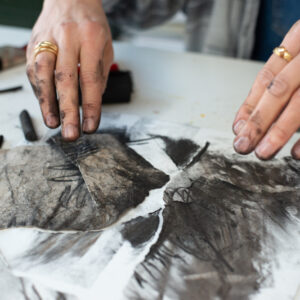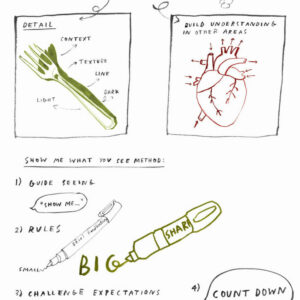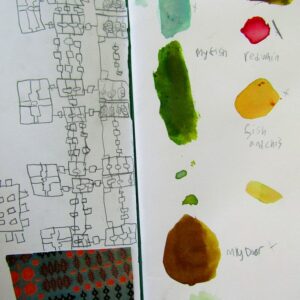Talking Points: Henry Moore – Drawing in The Dark
A collection of sources and imagery to explore the coal mining drawings made by Henry Moore.
Please note that this page contains links to external websites and has videos from external websites embedded. At the time of creating, AccessArt checked all links to ensure content is appropriate for teachers to access. However external websites and videos are updated and that is beyond our control.
Please let us know if you find a 404 link, or if you feel content is no longer appropriate.
We strongly recommend as part of good teaching practice that teachers watch all videos and visit all websites before sharing with a class. On occasion there may be elements of a video you would prefer not to show to your class and it is the teacher’s responsibility to ensure content is appropriate. Many thanks.



Henry Moore
Henry Moore is best known for his sculptures and Shelter drawings, but in 1942 Moore also created a series of sketches from Wheldale Colliery, where his father had worked. Moore spent one week drawing from observation down the dark coal mine, and then created drawings, combining memory with observation.
Moore reflected upon his experience, stating “I now like black for its blackness – for its strength, its drama, its seriousness (and unsweetness).” – C. Owen, Drawing in The Dark: Henry Moore’s Coalmining Commission, 2022, p.136
Pit Notebook
In his Pit Notebook, Moore would create preparatory sketches. He would also make notes, jotting down what he could see or words that came to mind as he drew. On the pages of his Pit Notebook he would quickly carve out the space, creating a sense of what it was like down the coal mine in Castleford.
Some of the sketches focus on figures and others on the environment.
These preliminary drawings were pivotal in the development of final drawings. Moore would piece together the different sketches, considering the notes he had jotted down and how he had felt within the space to create a complete drawing.
Explore a selection of Moore’s Pit Notebook sketches below.
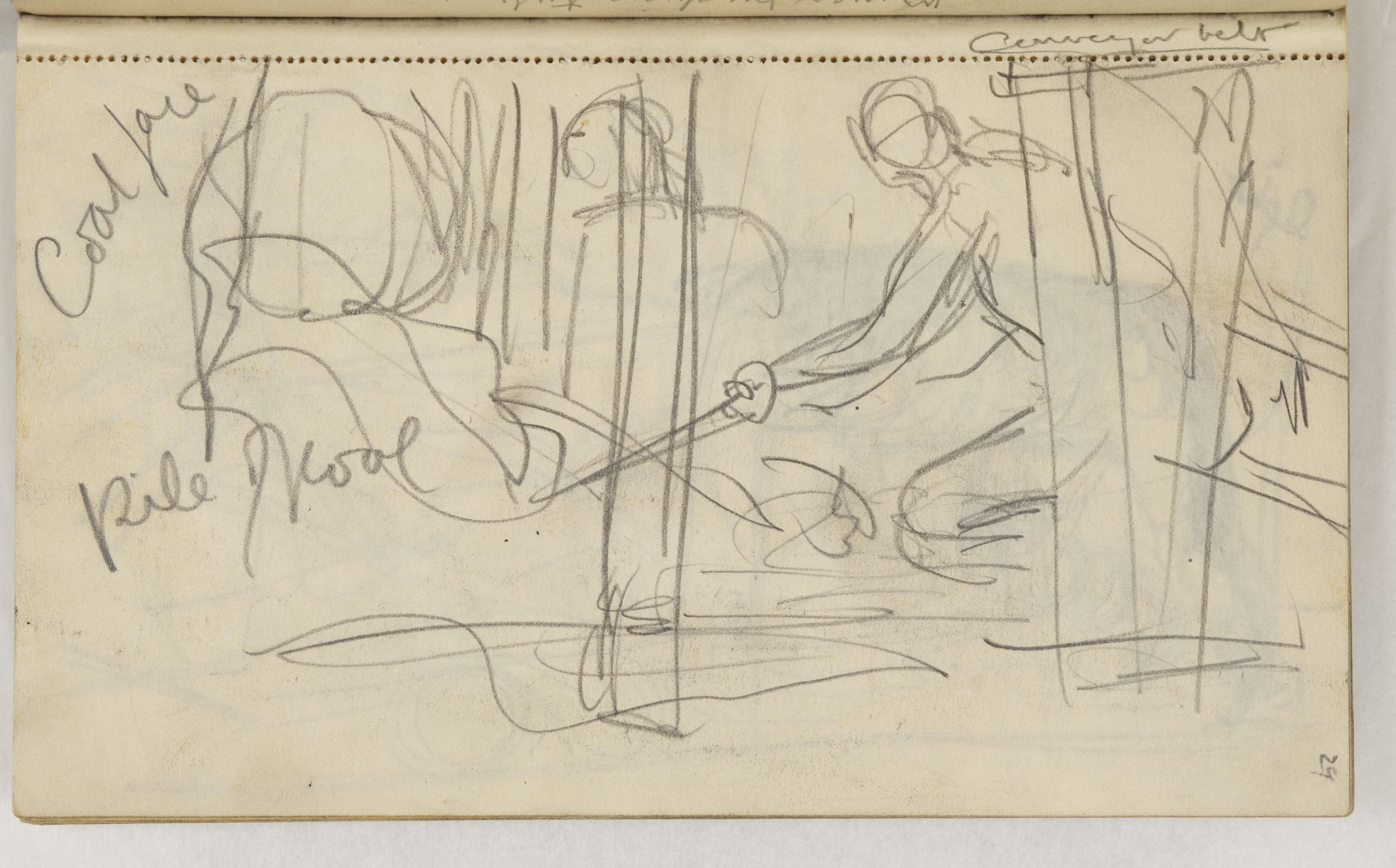
Miners at the Coalface, 1941-42
Page 29 from Coalmining Notebook A
HMF 1886
pencil
127 x 200 mm
The Henry Moore Foundation: gift of the artist 1977
Photo: Nigel Moore.
Reproduced by permission of The Henry Moore Foundation
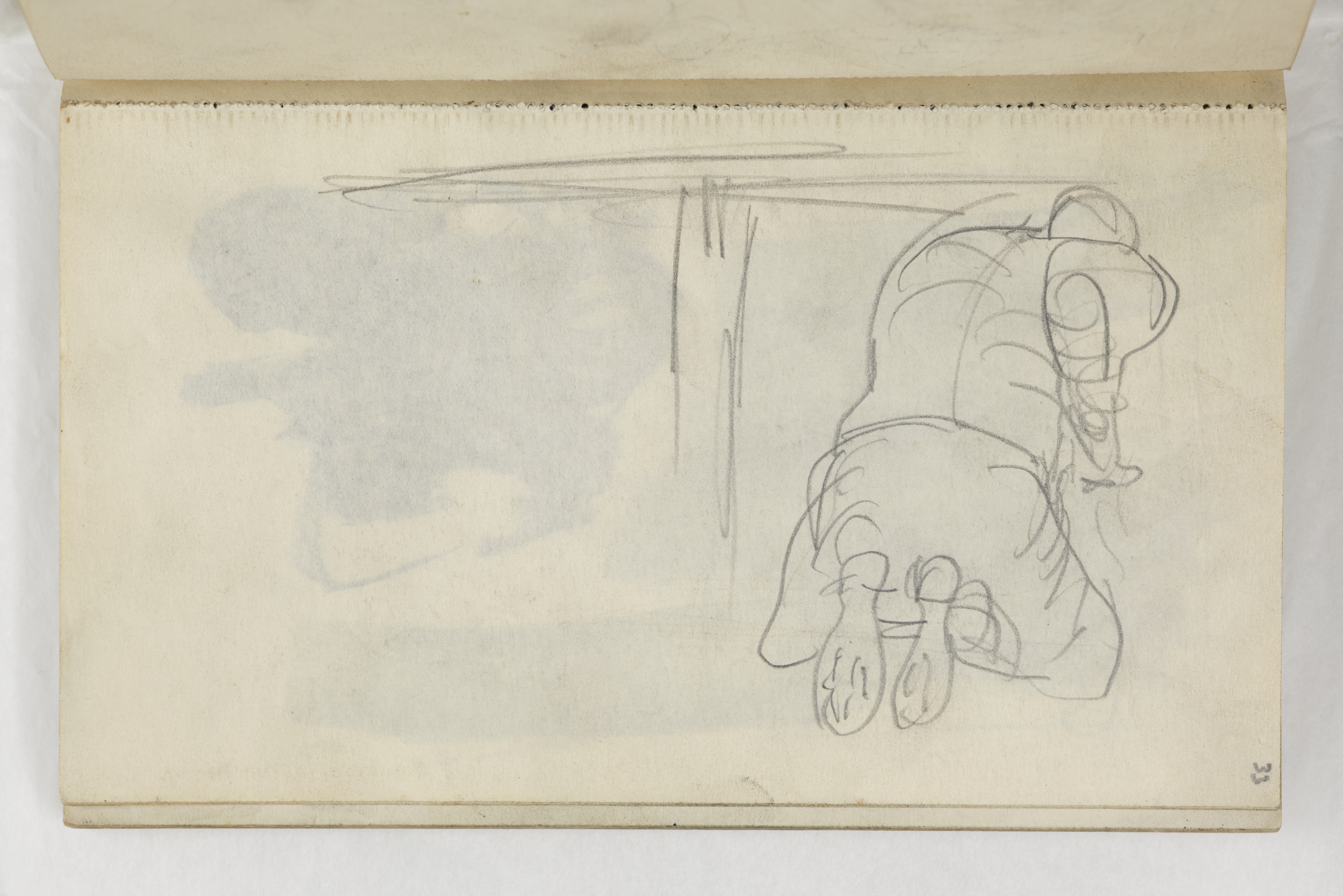
Miner Working, 1941
Page 33 from Coalmining Notebook A
HMF 1890
pencil
127 x 200 mm
The Henry Moore Foundation: gift of the artist 1977
Photo: Nigel Moore. Reproduced by permission of The Henry Moore Foundation
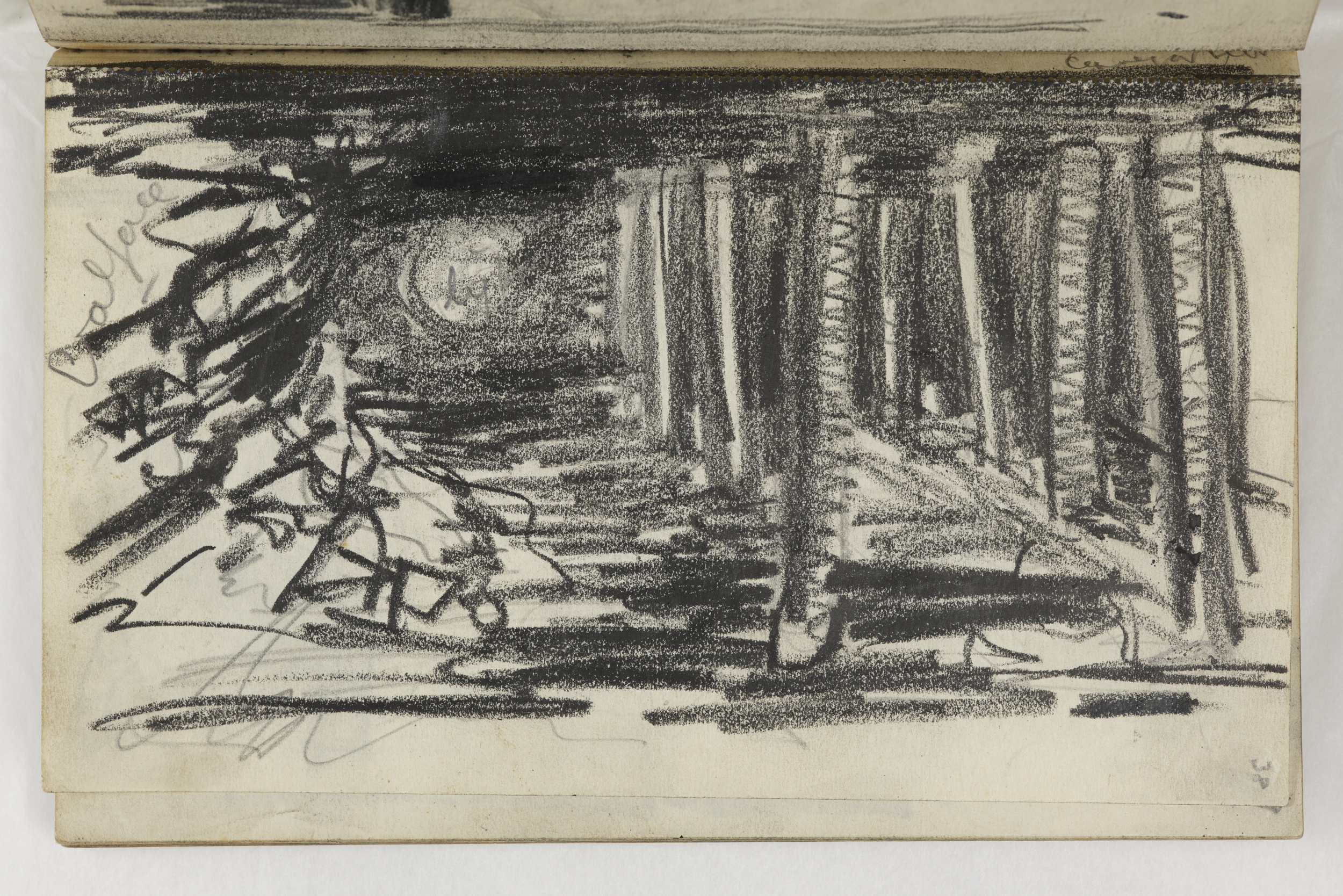
View Down Tunnel, 1941
Page 38 from Coalmining Notebook A
HMF 1895
pencil, crayon
127 x 200 mm
The Henry Moore Foundation: gift of the artist 1977
Photo: Nigel Moore. Reproduced by permission of The Henry Moore Foundation
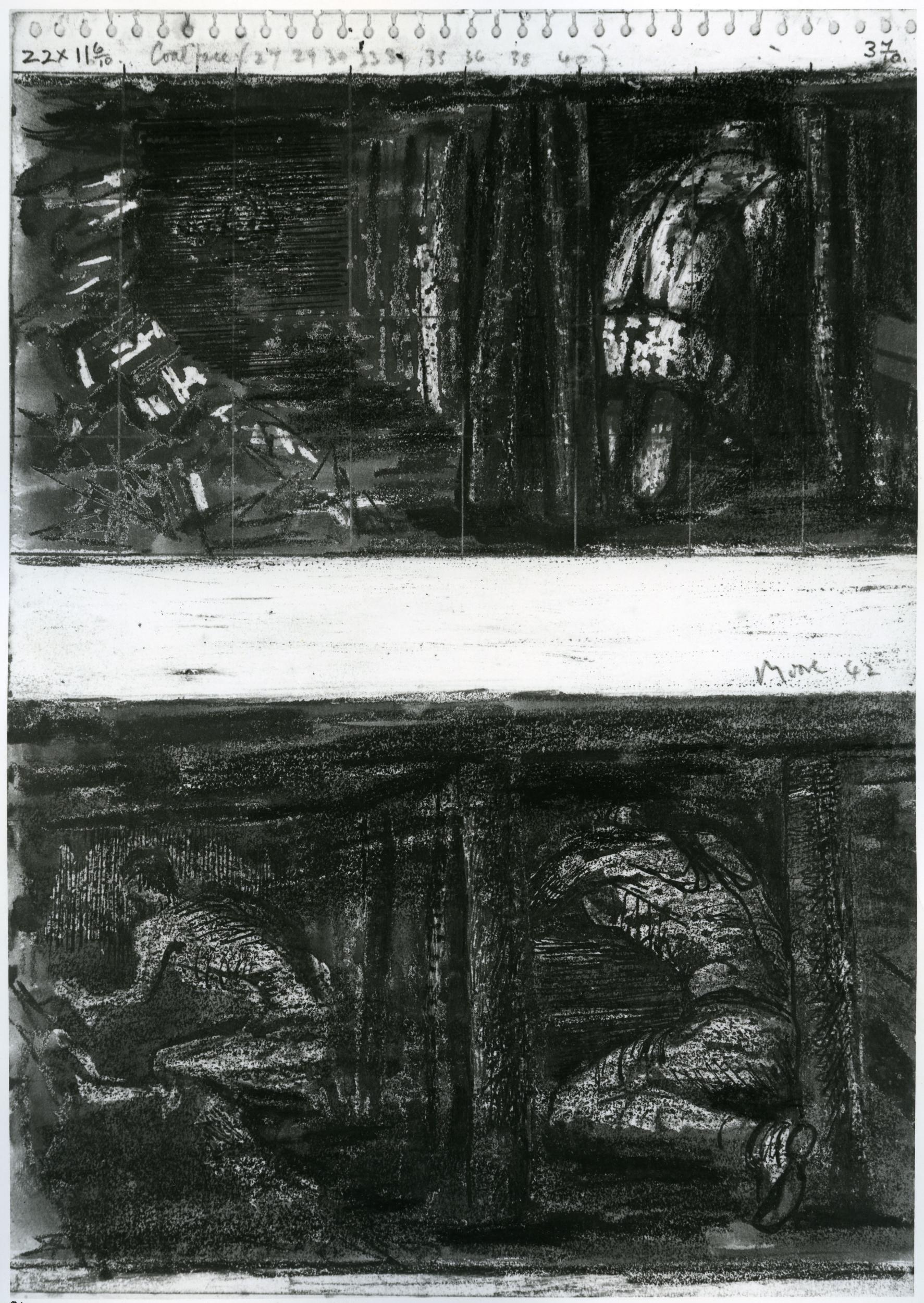
Study for ‘Miners at Work on the Coalface’ 1942
HMF 1961 Photo: Henry Moore Archive
Quotes From Henry Moore
Here you will find some quotes by Henry Moore referencing his developmental drawings. You may use these quotes as prompts for some activities from the “An Exploration of Coal Mining Through Henry Moore” pathway, or just use them for discussion.
“There was the problem of getting form out of darkness – of making the light from the miners’ helmet-lamps produce figures out of thick blackness – of drawing in the dark.” C. Owen, Drawing in The Dark: Henry Moore’s Coalmining Commission, 2022, p.136
“The blackest chalk or ink is grey compared to the pitch blackness of complete darkness.” C. Owen, Drawing in The Dark: Henry Moore’s Coalmining Commission, 2022, p.67
“To record in drawing what I felt and saw was a very difficult struggle. There was first the difficulty of seeing forms emerging out of deep darkness, then the problem of conveying the claustrophobic effect of countless wooden pitprops, 2 or 3 feet apart, receding into blackness.” – C. Owen, Drawing in The Dark: Henry Moore’s coal mining Commission, 2022, p.67
“As each drawing develops, it is like going outside from a lighted room on a dark night – at first seeing nothing, then slowly distinguishing objects and distances – sensing space with unknown depths.”- C. Owen, Drawing in The Dark: Henry Moore’s Coalmining Commission, 2022, p.8
“The white of the paper showing through the black chalk gives off light (almost real light) like the night sky reflected in water.” – K. Clark, Henry Moore Drawings 1974, p.292
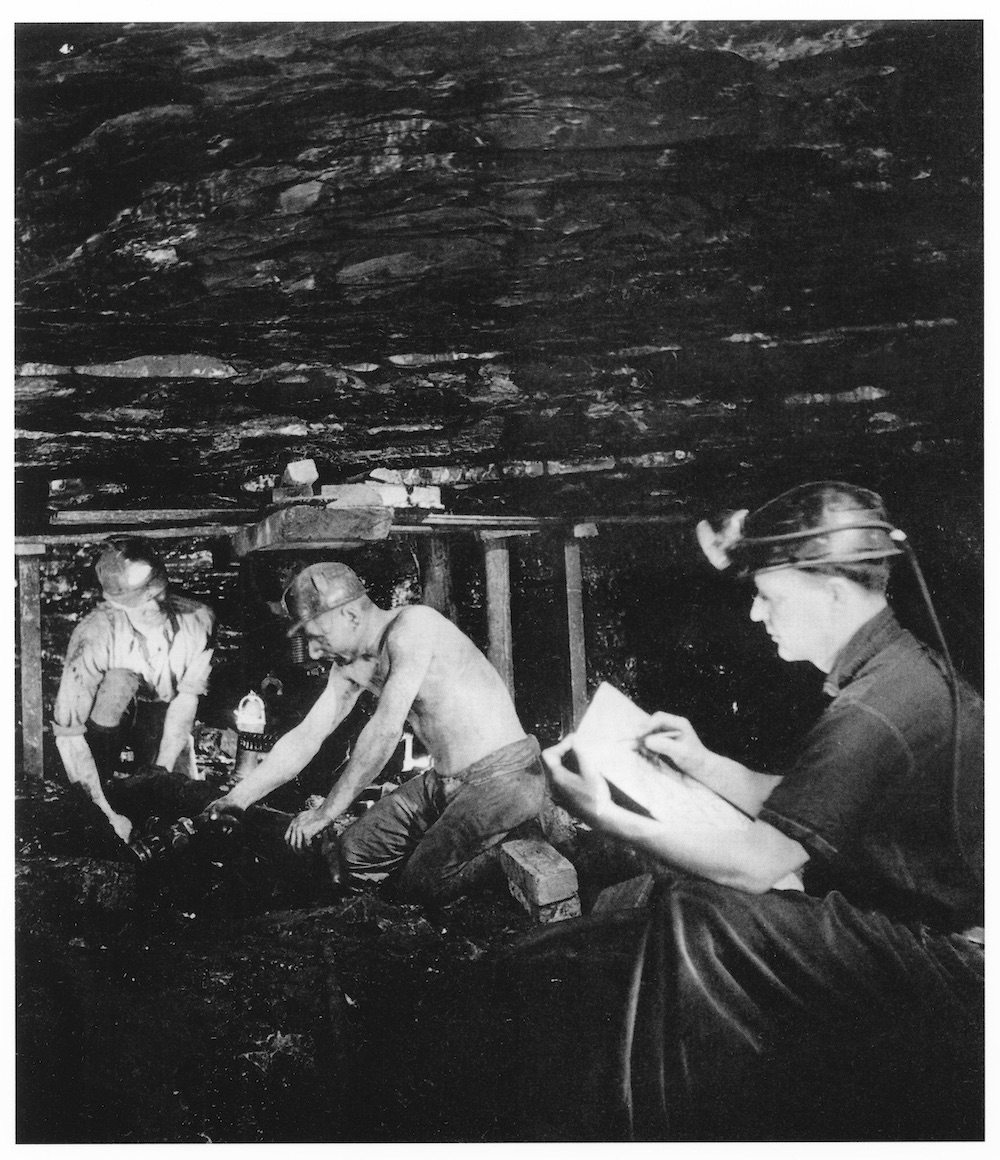
1942 Henry Moore sketching two miners at Wheldale Colliery Henry Moore Foundation archive 7 x 8” black and white print. Photo: Reuben Saidman
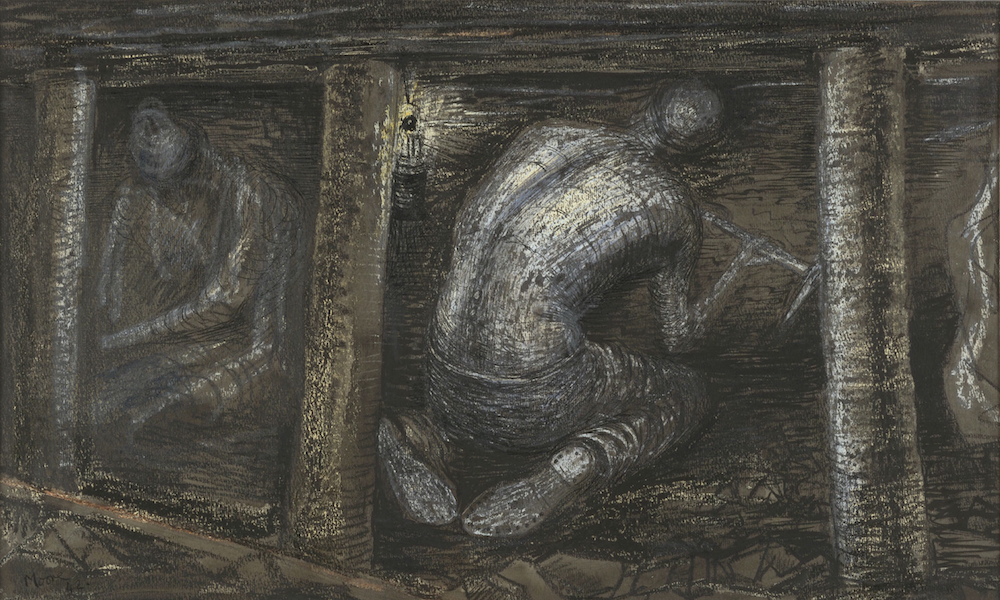
Henry Moore At the Coal Face 1942 Image (C) the Whitworth The University of Manchester (003)
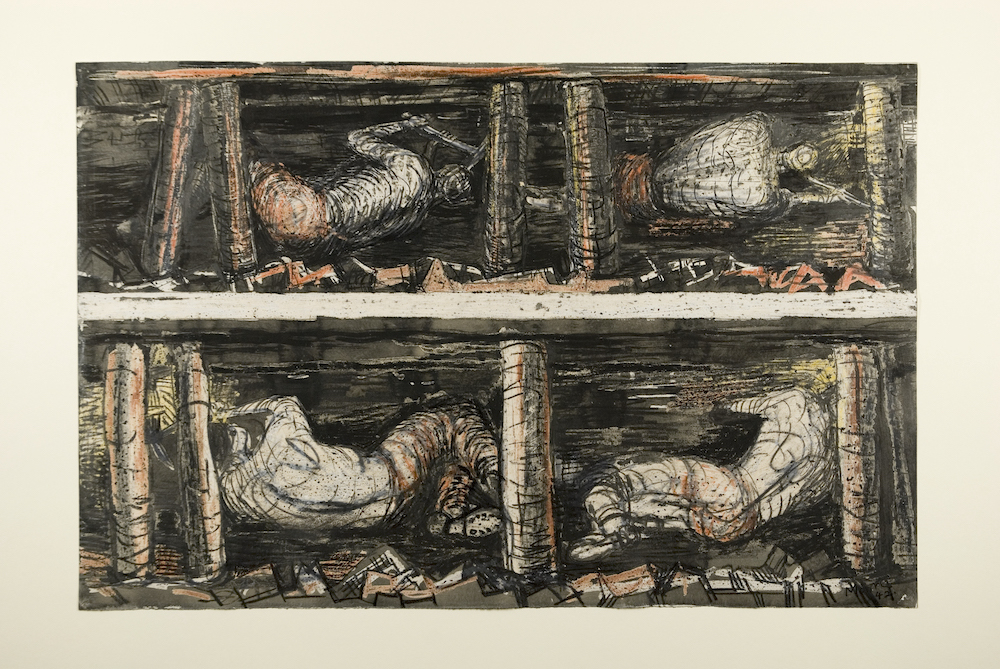
Four Studies of Miners at the Coalface, 1942, drawing. (HMF 2000a). Photo Michael Phipps. Reproduced by permission of The Henry Moore Foundation copy
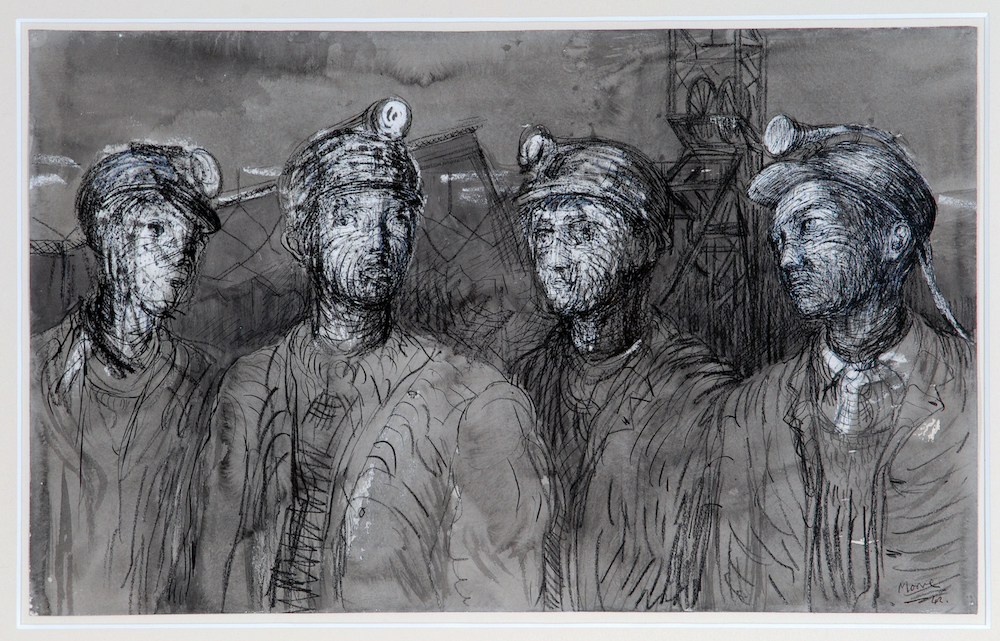
Pit Boys at Pit Head 1942 Wakefield Permanent Art Collection Image Courtesy of The Hepworth Wakefield LR copy. © The Henry Moore Foundation. All Rights Reserved, DACS 2022 / www.henry-moore.org. Photo credit: Wakefield Permanent Art Collection


